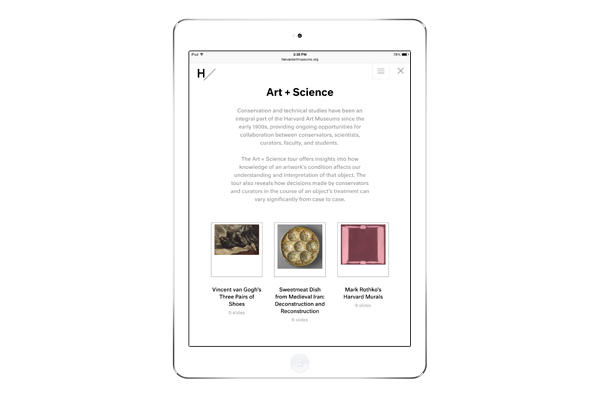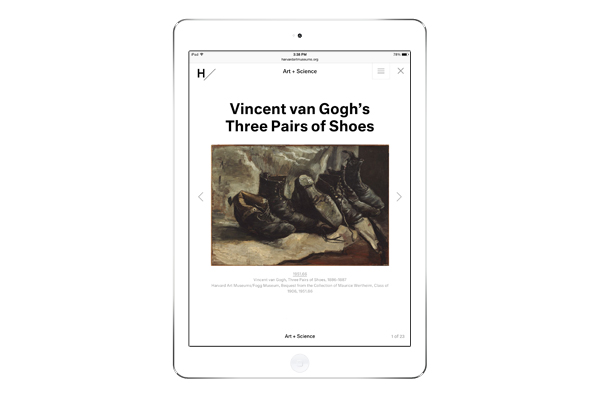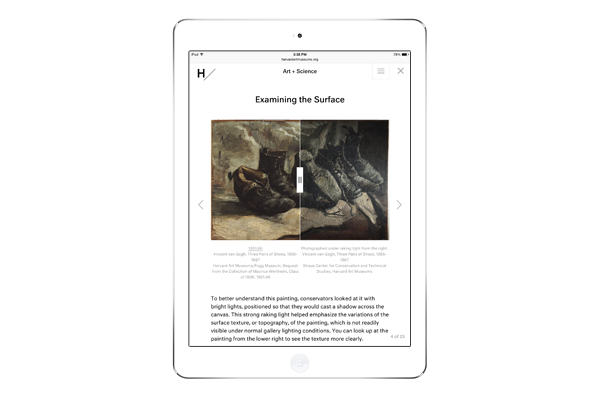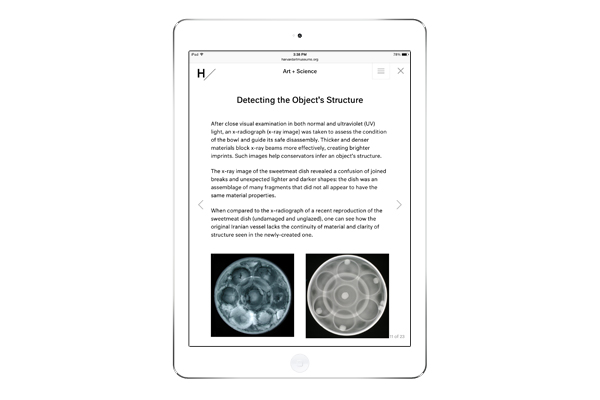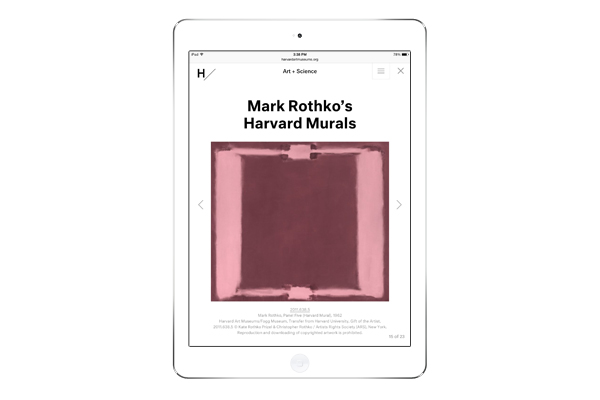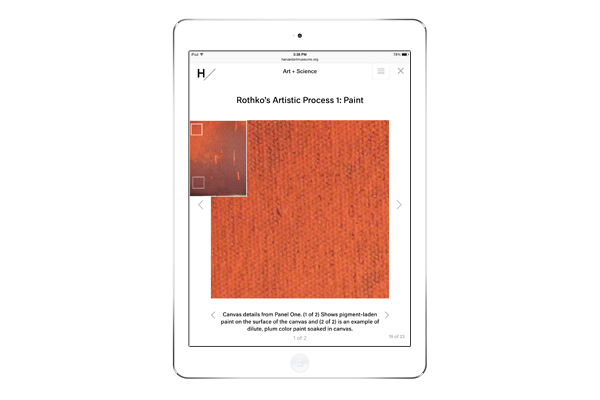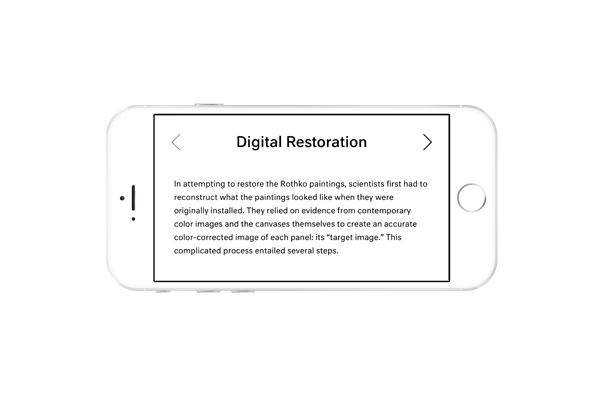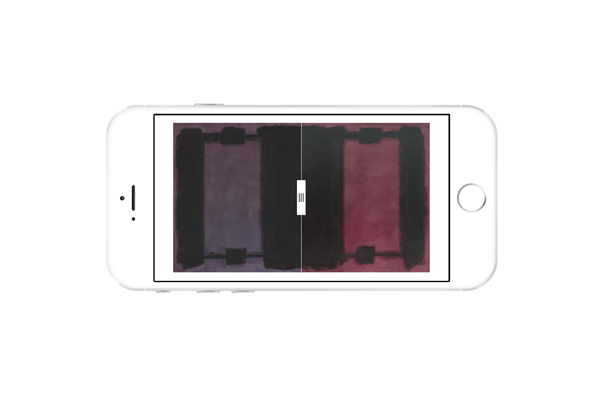The Harvard Art Museums’ Special Exhibitions Gallery is not the only place where you can view Mark Rothko’s Harvard Murals. A new digital tour focused on art and science offers an opportunity to appreciate and learn about the panels’ cutting-edge conservation treatment, even from thousands of miles away.
The murals are one of three “stops” on the museums’ Art + Science digital tour, a self-guided online experience that provides insights into how museum professionals interpret, understand, and treat objects in their care. In the case of the Rothko stop, text and a variety of never-before-seen images reveal how scientists, conservators, and curators devised the groundbreaking system for non-invasive color compensation, which ultimately helped return the murals to public view and scholarship.
Also featured in the tour are Vincent van Gogh’s Three Pairs of Shoes and a 13th-century sweetmeat dish from Iran, both of which are also currently on view in the museums.
“Each stop on these digital tours delivers an in-depth experience that can’t be offered with any amount of text in the gallery,” said Chris Molinski, the Rabb Curatorial Fellow for the Division of Academic and Public Programs, who helped organize the tours. The museums’ website also features Hotspots, a digital tour of six diverse objects or object collections from the museums. (Other tours will be available in the months to come.) “We’re providing supplemental material in the form of video, photographs, and audio,” Molinski said. These multimedia assets combine to present a rich learning experience that’s accessible to newcomers, yet illuminating for scholars as well.
The tours were designed to be viewed on mobile devices while in the museums—a small icon of a mobile device on an object label tells visitors that the object is included in a digital tour. But since the tours live online, they can be viewed before or after a visit as well.
Objects in each tour were “selected both for their individual significance and for the range of conversations they might spark,” Molinski said. The tours provide detailed information about individual objects, exploring creation, materiality, and transformations over time, among other topics.
An important feature of the Art + Science tour is an interactive slider, which lets users compare images of individual works under different conditions. In the Rothko stop, users can see photos of the murals from both before and after the color compensation. The sliders in the Van Gogh stop compare photographs of paintings with X-radiographs that reveal works hidden beneath the visible surface.
In the case of the sweetmeat dish, the tour tells the story of the object’s conservation, and includes original videos about the work’s deconstruction and reconstruction. These short, illuminating films feature Mary McWilliams, the Norma Jean Calderwood Curator of Islamic and Later Indian Art; Tony Sigel, conservator of objects and sculpture for the Straus Center for Conservation and Technical Studies; and Kathy King, director of education for the Harvard Ceramics Program.
Material for the digital tours was produced by curators, curatorial fellows and interns, staff from the Division of Academic and Public Programs, and the museums’ design team. The Art + Science tour stops were developed by Francesca G. Bewer, research conservator for conservation and technical studies programs, and Argyro Nicolau, a Ph.D. candidate in comparative literature, with contributions from conservation staff and other individuals from across the museums.
Not only will there be additional themed tours in the future, there will also be tours that can be used by local educators. Teachers from both Harvard and Cambridge-area communities will soon be able to create their own tours, drawing from the museums’ vast collections to enhance their lesson plans. It’s yet another way that the museums are broadening access to and offering opportunities for teaching and learning with works of art.
